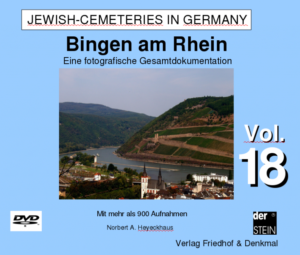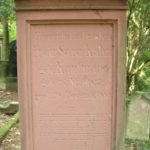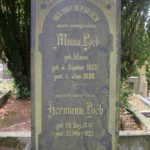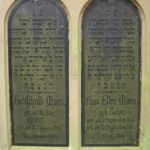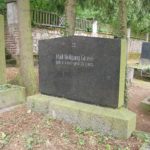The Jewish Cemetery in Bingen Vol.18
Examples
- 900 photos
- Download 95.- €
- USB Stick 120.- € (+shipping)
- Hardcover DVD 120.- € (+ shipping )
The Jewish Cemetery Bingen is a place of peace and remembrance. It is an important part of Jewish history and culture in the city and is a protected cultural monument.
The cemetery is located on a hill overlooking the town of Bingen, in the state of Rhineland-Palatinate, Germany. It is surrounded by a high wall and has an area of 9,327 square meters.
The cemetery was established in the 16th century and is still in use today. There are over 1,000 gravestones preserved on the cemetery, which are spread over an area of 9,327 square meters. The gravestones are in different styles and materials, including sandstone, granite, and marble.
The oldest gravestone dates back to 1602. It is a simple stone with a Hebrew inscription that reads „Here lies Moses, the son of Jacob, who died in the year 5362.“
In the 18th century, the gravestones became increasingly elaborate. There are gravestones with inscriptions, symbols, and reliefs.
Some of the gravestones are for spa guests from Russia and England who died while on their spa vacation in Bingen.
The cemetery is an important place for the Jewish community in Bingen. It is a place of remembrance for the deceased and a symbol of Jewish history and culture in the city.
Detailed description of the gravestones
The gravestones on the Jewish Cemetery in Bingen are in different styles and materials. The oldest gravestone dates back to 1602 and is a simple stone with a Hebrew inscription. In the 18th century, the gravestones became increasingly elaborate. There are gravestones with inscriptions, symbols, and reliefs.
Simple gravestones
The oldest gravestones on the cemetery are simple and without decoration. They are typically made of sandstone or granite and have a rectangular or square shape. The inscriptions on these gravestones are written in Hebrew and contain the name of the deceased, the date of death, and sometimes a verse from the Bible.
Elaborate gravestones
In the 18th century, the gravestones became increasingly elaborate. There are gravestones with inscriptions, symbols, and reliefs.
- Inscriptions: The inscriptions on the gravestones are written in Hebrew and contain the name of the deceased, the date of death, and sometimes a verse from the Bible.
- Symbols: Various symbols can be found on the gravestones, including Stars of David, menorahs, and Torah scrolls. These symbols have religious significance and are expressions of the Jewish faith.
- Reliefs: Some gravestones have reliefs depicting the deceased or religious motifs.
Gravestones for spa guests
Some of the gravestones on the cemetery are for spa guests from Russia and England who died while on their spa vacation in Bingen. These gravestones are typically written in German and contain the name of the deceased, the date of death, and the origin.
Overall impression
The Jewish Cemetery in Bingen is a place of peace and remembrance. It is an important part of Jewish history and culture in the city and is a protected cultural monument.

